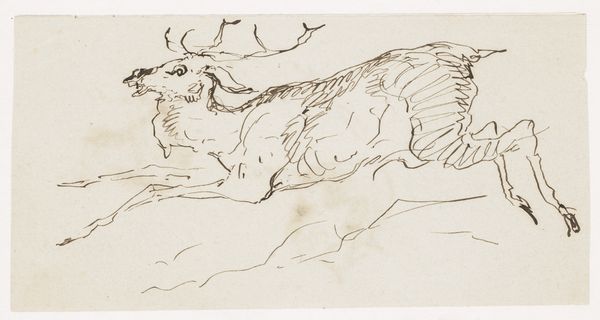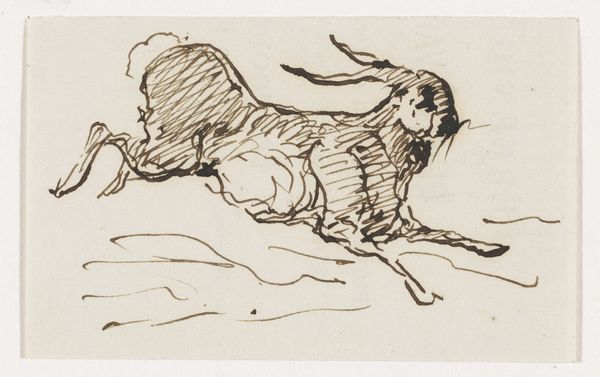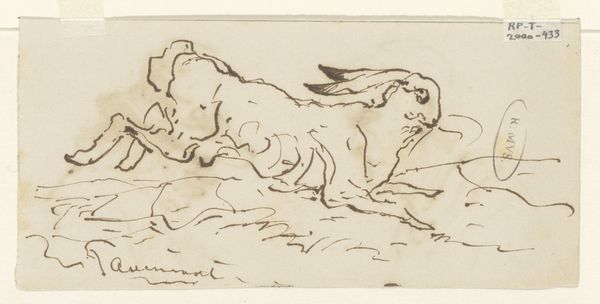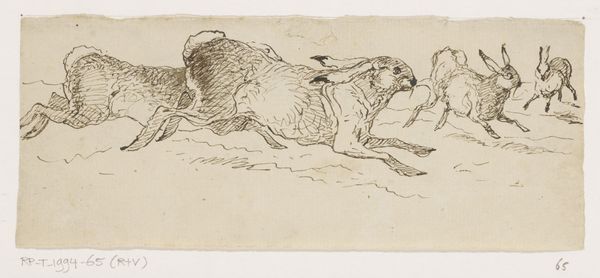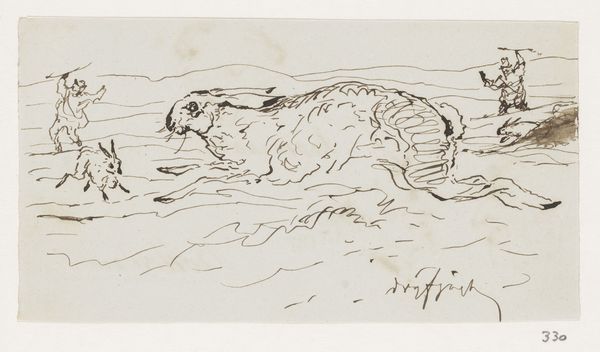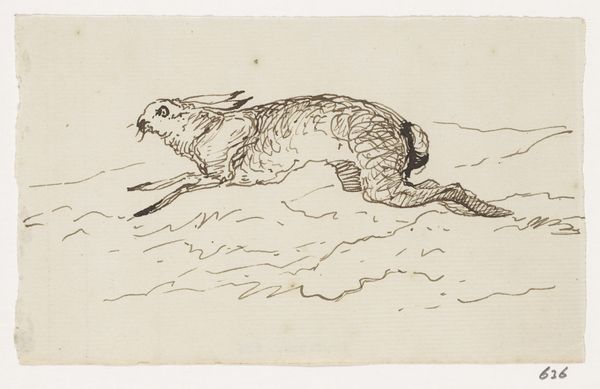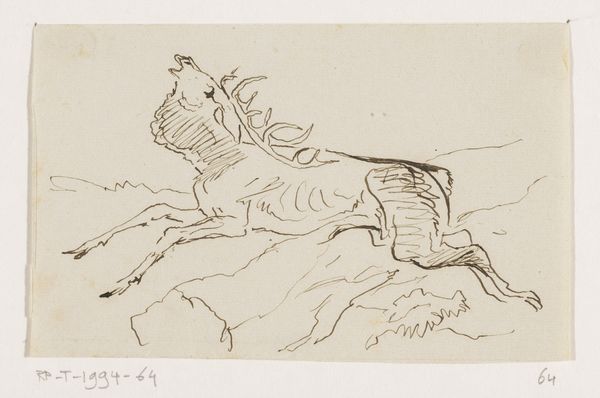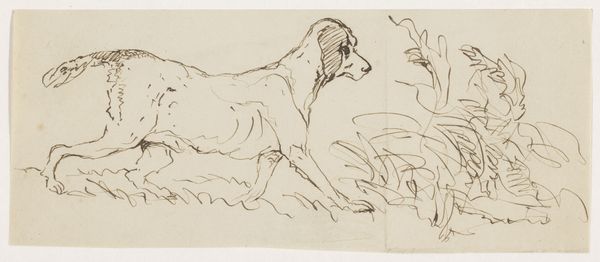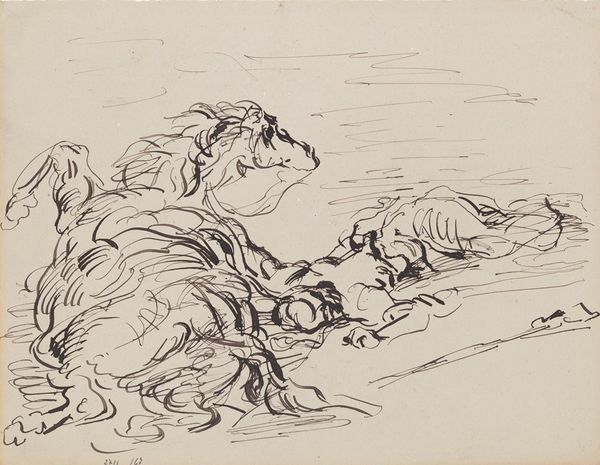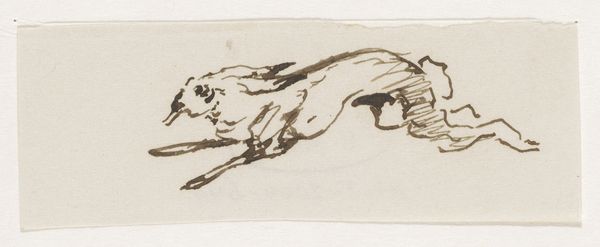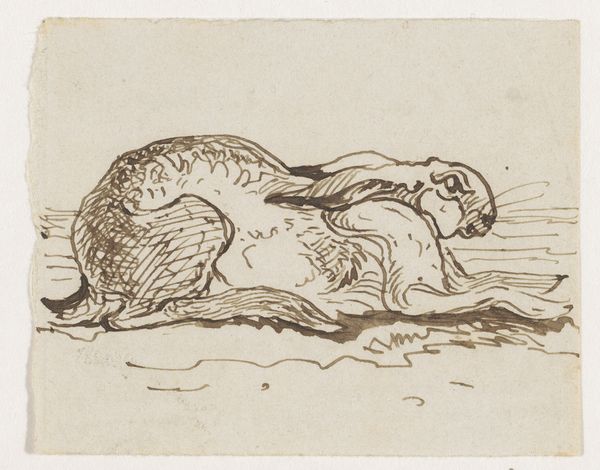
drawing, ink, pen
#
drawing
#
ink drawing
#
animal
#
pen sketch
#
landscape
#
etching
#
ink
#
pen
Dimensions: height 65 mm, width 103 mm
Copyright: Rijks Museum: Open Domain
Curator: This ink and pen drawing, attributed to Johannes Tavenraat and simply titled "Haas," likely dates from the mid-19th century, around 1840 to 1880. Editor: There’s an immediacy to this piece; a few strokes and suddenly you see a hare leaping, with what looks like a dachshund rather stiffly standing back, maybe watching? The ink feels almost gestural, the drawing loose, really giving it life. Curator: The hare, a symbol of both fecundity and timidity, has held a complex place in human culture. Representing vulnerability, transformation, and, in some traditions, even lunar symbolism. Think of its use in storytelling, like Aesop’s fables, its symbolism is pretty persistent. Editor: Looking closer, it seems this isn’t a quickly discarded sketch. Look at the variation of the ink, how dark it gets along the contour of the leaping hare compared to the short, thin lines used to suggest fur. What kind of pen would create that kind of variance? Was the paper prepared, or just whatever was on hand? What does that materiality reveal about the work? Curator: Perhaps the artist intended to capture the swift vitality of nature? I imagine viewers would see this dance between predator and prey as both frightening and essential to the balance of life in the fields. Editor: It really prompts us to consider the artist’s perspective. What part does labor play? If he sketched the hare and dog in situ, how might weather or the fleeting behavior of the animals change the lines of this pen-and-ink work? Curator: Whether the hare stands for abundance or represents mortality and the circle of life depends on the viewer's background. That shifting symbolic load is exactly what makes it engaging. Editor: Right, and for me, the ink and simple paper locate this drawing firmly in its historical period; so inexpensive and so mobile. An immediacy that is interesting in its contrast with much more laborious, painstaking painting we may expect from the era. Curator: Food for thought, isn’t it? So many ways in which visual codes reveal persistent threads of culture. Editor: Indeed, and in this small piece, we see not just a hare, but the touch of a hand enacting something spontaneous from a given moment in time.
Comments
No comments
Be the first to comment and join the conversation on the ultimate creative platform.
